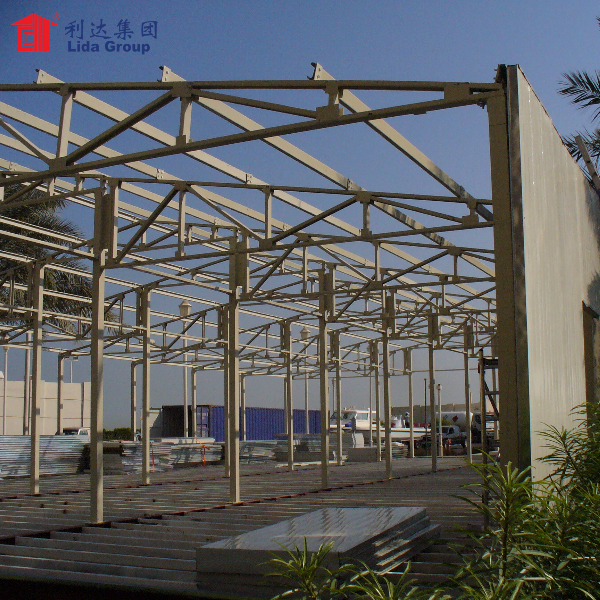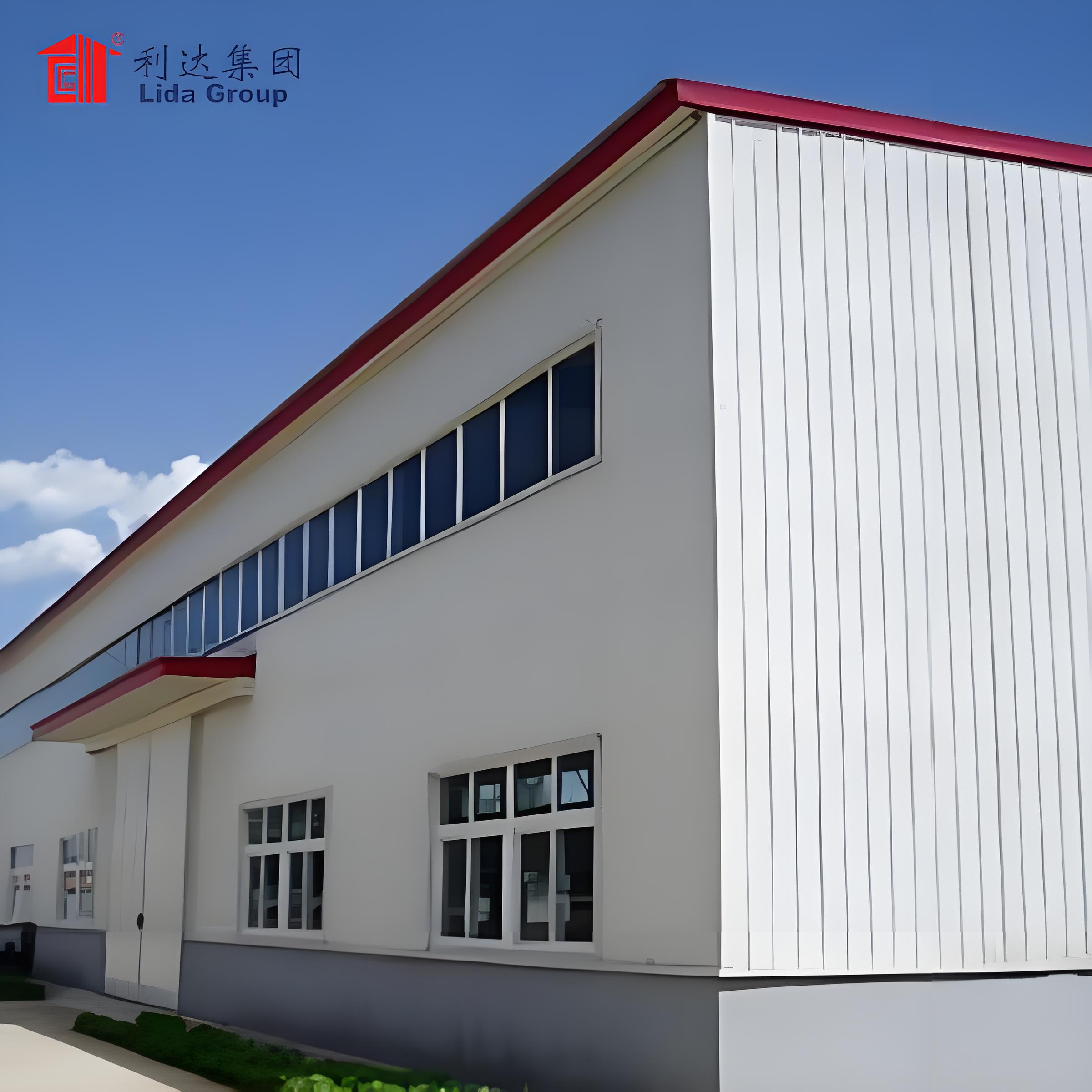Introduction
In today’s world, sustainability and environmental consciousness are crucial considerations in construction. Lida Group, a leading provider of steel structure buildings, understands the importance of eco-friendly practices. They have integrated various sustainable features into their designs, ensuring that their buildings are not only structurally sound but also environmentally responsible. In this article, we will explore the eco-friendly features in Lida Group‘s steel structure buildings and how they contribute to a greener and more sustainable future.
- Energy Efficiency
One of the primary eco-friendly features in Lida Group’s steel structure buildings is a focus on energy efficiency. By incorporating energy-efficient systems and design strategies, these buildings minimize energy consumption and reduce their carbon footprint.
a. Insulation: Lida Group employs high-quality insulation materials to enhance thermal performance. Proper insulation minimizes heat transfer through walls, roofs, and floors, reducing the need for excessive heating or cooling. This results in significant energy savings and improved indoor comfort.
b. Energy-efficient windows and doors: Lida Group’s steel structure buildings feature energy-efficient windows and doors. These are designed with advanced glazing technologies, such as double or triple glazing, low-emissivity coatings, and insulated frames. These features improve thermal insulation, minimize air leakage, and allow for natural daylighting, reducing the reliance on artificial lighting during the day.
c. Lighting systems: Energy-efficient lighting systems, such as LED lights, are installed throughout Lida Group’s steel structure buildings. LED lights consume less energy, have a longer lifespan, and produce less heat compared to traditional lighting options. Incorporating intelligent lighting controls, such as motion sensors and daylight sensors, further optimizes energy usage by automatically adjusting lighting levels based on occupancy and ambient light conditions.
d. HVAC systems: Lida Group designs HVAC (Heating, Ventilation, and Air Conditioning) systems that are energy-efficient and provide optimal indoor air quality. These systems incorporate energy-saving technologies like variable-speed drives, heat recovery ventilation, and programmable thermostats. By optimizing temperature control and ventilation, these systems reduce energy waste and improve occupant comfort.
- Renewable Energy Integration
Lida Group recognizes the importance of renewable energy sources in reducing reliance on fossil fuels and mitigating environmental impact. Their steel structure buildings are designed to incorporate renewable energy systems, harnessing natural resources to generate clean and sustainable power.
a. Solar power: Lida Group’s steel structure buildings feature solar panels on rooftops or as standalone installations. These solar panels convert sunlight into electricity, which can be used to power various building operations. By utilizing solar power, these buildings reduce dependence on traditional energy sources and contribute to greenhouse gas emissions reduction.
b. Wind power: In regions with favorable wind conditions, Lida Group explores the integration of wind turbines into their steel structure buildings. These wind turbines harness wind energy and convert it into electricity, supplementing or replacing grid-based power. Wind power is a renewable and abundant resource that contributes to a greener energy mix.
- Water Management
Efficient water management is another eco-friendly feature incorporated into Lida Group’s steel structure buildings. These buildings are designed to minimize water wastage and promote sustainable water use.
a. Rainwater harvesting: Lida Group integrates rainwater harvesting systems into their steel structure buildings. Rainwater is collected from rooftops and stored for later use, such as irrigation, toilet flushing, or non-potable water needs. This reduces the demand for freshwater and relieves pressure on local water sources.
b. Water-efficient fixtures: Lida Group’s buildings are equipped with water-efficient fixtures, including low-flow faucets, toilets, and showers. These fixtures reduce water consumption without compromising functionality and user experience. By conserving water, these buildings contribute to water resource sustainability.
- Sustainable Materials and Construction Practices
Lida Group prioritizes the use of sustainable materials and construction practices to minimize environmental impact throughout the building lifecycle.
a. Steel: Steel is a highly sustainable construction material due to its recyclability and durability. Lida Group’s steel structure buildings utilize a significant amount of recycled steel, reducing the need for virgin materials and minimizing waste. Additionally, steel structures have a longer lifespan and require less maintenance compared to traditional building materials, ensuring long-term sustainability.
b. Construction waste management: Lida Group emphasizes proper waste management during construction. They implement recycling programs on construction sites to separate and recycle waste materials, minimizing landfill waste and reducing the environmental impact of the building process.
c. Green certifications: Lida Group’s steel structure buildings can be designed to meet various green building certifications, such as LEED (Leadership in Energy and Environmental Design) or BREEAM (Building Research Establishment Environmental Assessment Method). These certifications recognize buildings that meet stringent sustainability criteria, including energy efficiency, water conservation, indoor environmental quality, and materials selection.
Conclusion
Lida Group’s commitment to eco-friendly practices is evident in the design and construction of their steel structure buildings. By incorporating energy-efficient features, integrating renewable energy systems, promoting water management, and adopting sustainable materials andconstruction practices, Lida Group is paving the way for a greener and more sustainable future in the construction industry.
Their focus on energy efficiency, through insulation, energy-efficient windows and doors, lighting systems, and HVAC systems, significantly reduces energy consumption and lowers greenhouse gas emissions. By integrating renewable energy sources like solar power and wind power, Lida Group’s buildings actively contribute to the shift towards clean and sustainable energy generation.
Water management features, such as rainwater harvesting and water-efficient fixtures, help conserve water resources and minimize wastage. These practices align with the goal of achieving sustainable water use and reducing the strain on local water supplies.
Lida Group also prioritizes the use of sustainable materials, particularly steel, which is recyclable and durable. By utilizing recycled steel and implementing proper waste management practices, they minimize the environmental impact associated with construction and reduce the reliance on virgin materials.
The incorporation of eco-friendly features in Lida Group’s steel structure buildings extends beyond individual projects. These buildings serve as exemplars of sustainable design and construction practices, inspiring the industry as a whole to adopt greener approaches. By pursuing green building certifications, Lida Group demonstrates their commitment to meeting the highest sustainability standards and driving positive change in the construction sector.
In conclusion, Lida Group’s steel structure buildings exemplify the integration of eco-friendly features and sustainable practices. With a focus on energy efficiency, renewable energy integration, water management, and sustainable materials, Lida Group is at the forefront of creating buildings that are not just structurally robust but also environmentally responsible. Through their commitment to sustainability, Lida Group is making a significant contribution to a more sustainable and greener future in the construction industry.
Post time: May-21-2024


